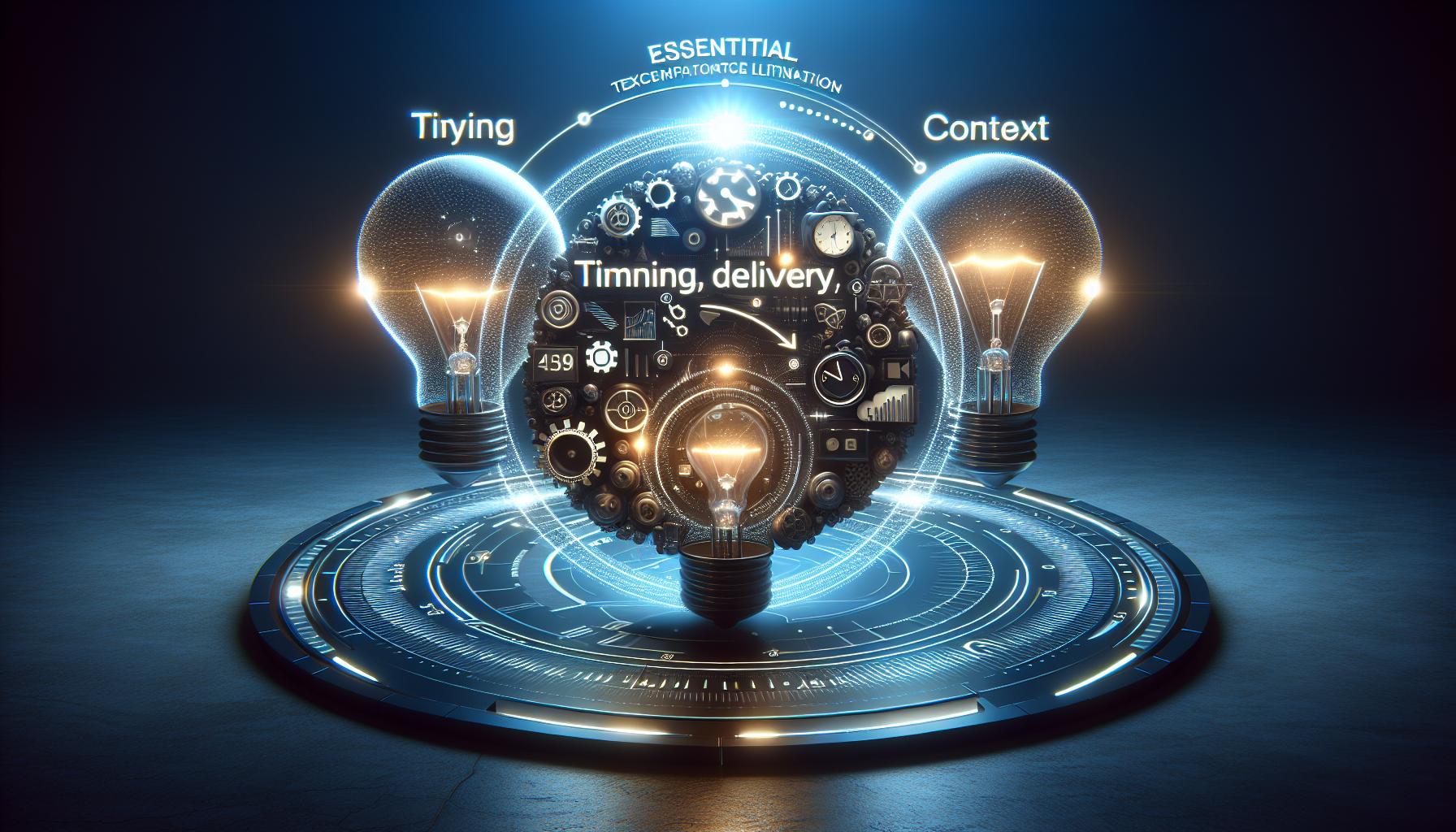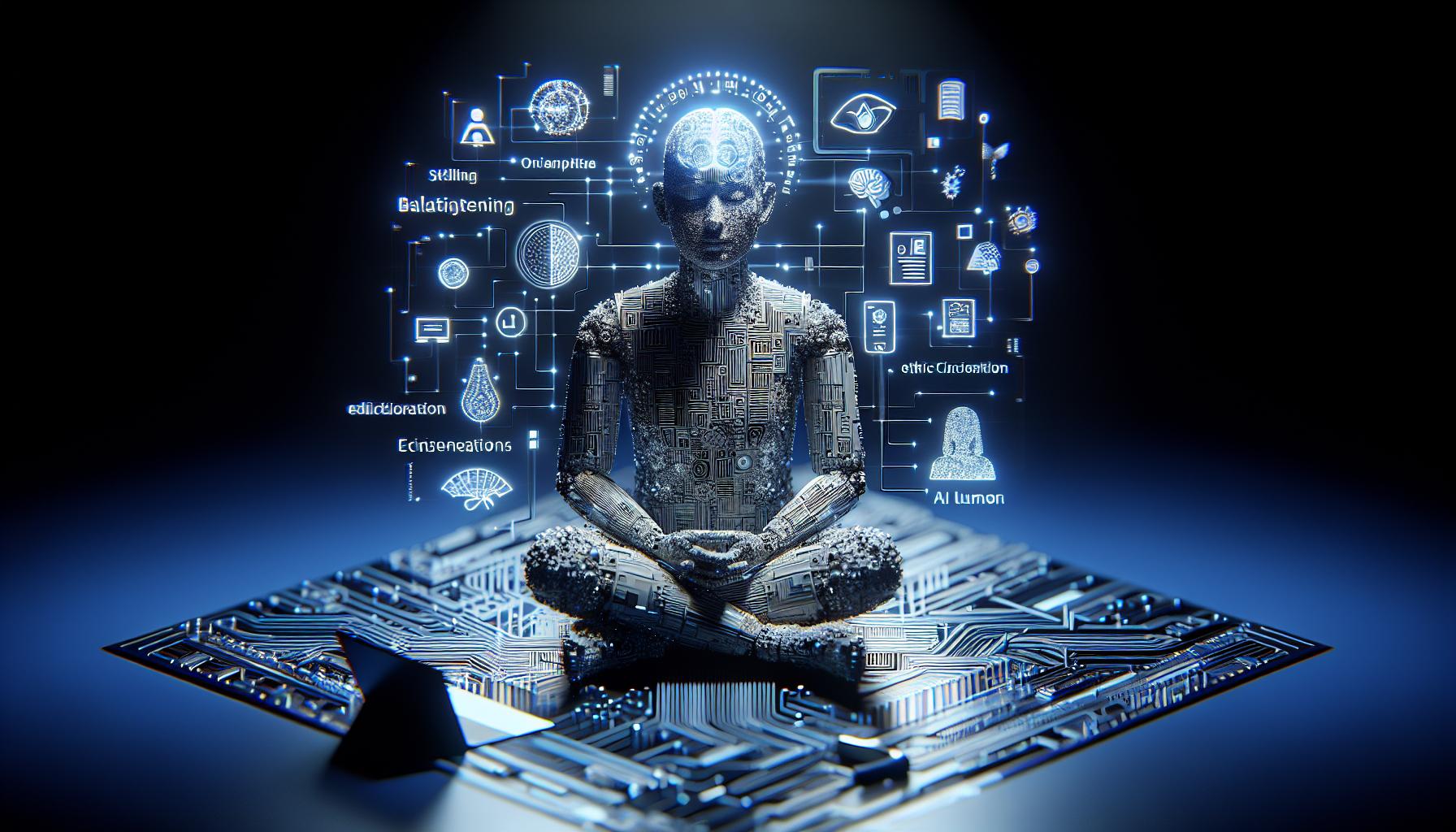Navigating the often serious realm of debates can be a challenge, especially when humor can lighten the mood.Engaging friends or characters in playful discussions not only fosters creativity but also enhances friendship. Discover how AI prompts can inspire amusing arguments, transforming casual conversations into memorable exchanges filled with laughter and wit.
crafting the Perfect AI Prompt for a Hilarious Debate Scenario
Engaging the Audience’s Creativity
To effectively craft an AI prompt for a funny debate between fictional characters, begin by immersing the audience in a lively setting that sparks imagination. Picture a dynamic arena where well-loved characters engage in witty banter. This creative backdrop not only captivates the audience but also provides fertile ground for humor. Key components of yoru prompt should include well-defined character traits and quirks. This approach ensures that their responses align with their established personas, allowing for more engaging and relatable debates.
- Character Selection: Choose characters with contrasting viewpoints or humorous histories.
- Setting the Scene: Describe an amusing or exaggerated context for the debate.
- Interaction Elements: Incorporate imaginary audience reactions or commentary to enhance the humor.
Structuring the Debate Prompt
When structuring your AI prompt, clarity and creativity are paramount. Introduce the specific topic of the debate, ensuring it resonates with the audience while providing ample space for humor. Include particular objectives or tasks for the characters, making it clear what they’re arguing for or against. A well-framed prompt could look like this: “Imagine what woudl happen if Sherlock holmes debated Harry Potter over the merits of logic versus magic in solving mysteries.”
Additionally,you can suggest various humorous debate styles,such as mocking tones or exaggerated demonstrations,which infuse liveliness into the dialogues. Here’s a simple example of how you might format your table of potential debate topics:
| Debate Topic | Character 1 | Character 2 |
|---|---|---|
| Is it better to use gadgets or magic? | James bond | gandalf |
| Which world is more chaotic? | Peter Pan | Wile E. coyote |
| Best way to avoid adult responsibilities? | Ferris Bueller | Deadpool |
Experimenting with Humor
Creativity thrives on experimentation, especially in humorous contexts. Encourage the AI to generate different styles of dialog—such as slapstick, puns, or witty retorts—by incorporating varied prompt structures and styles. the more you stimulate the AI’s creative capacities, the more entertaining and diverse the outcomes will be. Remember, the art lies in the interplay among characters, the rapid-fire delivery of jokes, and the clever twists in arguments. This multi-layered approach transforms simple dialogues into memorable exchanges that highlight the charm and quirkiness of the characters involved.
Exploring Character Dynamics: Who’s Bringing the Laughs?
Dynamic Duos: The Art of humor in Character Interactions
Creating humor through character dynamics can ignite laughter and foster connection among audiences, whether in writing or conversation. When characters with opposing traits or backgrounds are thrust together, the potential for comedic dialogue and situations flourishes. For instance, contrasting personalities—such as an overly serious detective paired with a neurotic sidekick—can lead to humorous exchanges that highlight their differences. this clever juxtaposition not only amplifies character advancement but also engages the audience in a relatable manner.
- Example 1: Imagine Sherlock Holmes debating with Monk about solving a complex murder case. Holmes, with his logical deductions, bickers playfully while Monk’s obsession with order and cleanliness complicates their investigative methods. Their debates could be filled with puns about crime scene ‘messiness,’ contrasting their approaches to solving mysteries.
- Example 2: In a humorous confrontation between Dracula and Edward Cullen, the old-school vampire’s dark charisma clashes with Cullen’s sparkly, modern allure. This scenario could lead to funny remarks about dating preferences and vampire stereotypes,illustrating how each character perceives romance differently.
The Power of Funny Debates in Building Character Relationships
Incorporating humor into debates among characters not only serves as entertainment but also enhances their relationships. Debates can reveal vulnerabilities or quirks,creating deeper bonds through laughter. Through witty banter, characters may inadvertently grow and influence each other, showing that even the most unlikely partnerships can lead to personal development. The comedic nature of these interactions keeps audiences engaged while simultaneously enriching character arcs.
For example,hosting a friendly banter competition between unlikely friends can illustrate this concept perfectly. Consider a scenario where characters argue over trivial matters like whether pineapple belongs on pizza. Such light-hearted discussions can quickly escalate into a full-blown, hilarious debate, showcasing each character’s viewpoint and personality while inviting the audience to choose sides.
Practical Tips for Crafting Humorous Character Dynamics
To effectively utilize humor in character debates, consider these actionable strategies:
| Strategy | Description |
|---|---|
| Contrasting Traits | Pair characters with different personalities or beliefs to spark humorous tension. |
| Witty Banter | Use clever dialogue and puns to keep the debate light and engaging. |
| Exaggeration | Amplify characteristics or viewpoints to ridiculous extremes for comedic effect. |
| Relatable Situations | Embed real-world dilemmas within the debate to connect with the audience. |
By embracing these strategies, writers can maximize humor in character interactions and create memorable comedic moments. Whether you’re developing a story or engaging in a friendly debate among friends, the dynamics of humor will always be a source of joy and entertainment.
Essential Elements of Humor: Timing, Delivery, and Context
Humor is an art that relies heavily on the interplay of timing, delivery, and context—each element essential for eliciting laughter during a debate or conversation. Whether it’s a light-hearted exchange among friends or a character-driven dialogue, mastering these components can transform an ordinary interaction into a memorable comedic experience.
The Role of Timing in Humor
Effective timing can be the difference between a joke landing perfectly or falling flat. Just as a musician relies on rhythm, comedians utilize pauses and pace to enhance the impact of their punchlines. As a notable example, extending the pause before delivering a humorous quip allows the audience to anticipate the punchline, heightening the overall suspense and surprise that leads to laughter. This gradual build-up can be notably effective in extended anecdotes, where the rhythm gradually accelerates before the climax, creating a natural tension that resolves with the punchline.
Delivery: More than Just Words
While the content of a joke certainly matters,how it’s delivered plays an equally significant role. Intonation, rhythm, and physicality all contribute to the comedic value of dialogue. A well-timed shift in tone can emphasize key phrases, while exaggerated facial expressions can enhance the absurdity of a situation. Such as, when characters in a debate exaggerate their reactions or use playful sarcasm, it amplifies the humor, ensuring the audience is engaged and entertained.Observing skilled performers can offer insights into how slight variations in delivery can transform mundane statements into comedic gold.
Context: the Framework of Humor
The context in which a joke is told can significantly affect its reception. Understanding your audience and the scenario is vital for generating humor that resonates. As an example, employing niche references that cater to a specific group can create a shared understanding, making jokes more relatable and impactful. Additionally, considering the emotional atmosphere and background of the debate helps tailor the humor to feel appropriate and authentic. A debate on a lighthearted topic is ripe for puns and playful jabs,while more serious discussions may require subtler,more nuanced humor.
| Element | Description | Example |
|---|---|---|
| Timing | Use of pauses and pacing to enhance punchlines. | Building suspense before revealing a twist. |
| Delivery | Vocal variation and physical expressions. | exaggerated gesticulations when making a sarcastic remark. |
| context | Understanding audience and situational appropriateness. | Using relatable references that resonate with listeners. |
Incorporating these essential elements into any debate,especially when utilizing an AI Prompt for a Funny Debate Between Friends or Characters,can lead to a more engaging and enjoyable experience. Mastery over timing, delivery, and context makes it possible to navigate complex dialogues with humor, ensuring that the laughter continues long after the conversation ends.
Understanding AI’s Role: Generating Quips and counterarguments
AI’s Unique contribution to Humor
The intersection of artificial intelligence and humor opens up exciting avenues for creativity, particularly in generating witty banter between fictional characters. AI excels in crafting quips and counterarguments by analyzing character traits and leveraging their inherent quirks. For example, two characters with opposite worldviews can engage in a humorous exchange where their exaggerated perspectives lead to unexpected and laugh-out-loud conclusions. This method not only entertains but also offers a glimpse into the nuanced dynamics of character relationships.
Crafting Effective Prompts
To maximize the comedic potential of AI-generated content, it’s essential to develop robust prompts. A well-structured AI prompt for a funny debate might include the specific traits of each character, their history, and the theme of the debate.Here are some tips for creating engaging prompts:
- Define Character Traits: Specify characteristics that influence the humor, such as ‘a pessimistic wizard’ or ‘an overly optimistic detective.’
- Establish Context: Set the scene for their debate. As an example, ‘debating the merits of magic vs. technology in everyday life.’
- Encourage Conflict: introduce opposing views to incite a humorous clash, prompting the characters to use exaggerated sarcasm or irony.
Example Scenarios
Consider an AI scenario where Sherlock Holmes debates a modern-day AI about the best methods to solve mysteries. Here’s how the exchange could unfold, showcasing clever humor:
| Character | Quip/Counterargument |
|---|---|
| Sherlock holmes | “I deduce that you solve crimes by accessing billions of data points, but I prefer the thrill of a good chase.” |
| Modern AI | “True, but I can find your lost hat in less than a second.How’s that for a chase?” |
such interactions not only highlight the strengths and weaknesses of each character but also provide a platform for humor through their contrasting styles.By harnessing AI’s capabilities in generating humorous quips and counterarguments,creators can explore endless possibilities for engaging dialogues that captivate audiences.
Balancing Wit and Wisdom: Ethical Considerations in AI Humor
Striking the Right Balance in Humor
In the age of AI, humor serves as both a tool for connection and a potential minefield of ethical challenges. When utilizing an AI prompt for a funny debate between friends or characters, it is indeed crucial to understand how humor can inadvertently reinforce biases or perpetuate stereotypes. This interplay of wit and wisdom draws attention to the necessity of thoughtful consideration in content generation. The creation of humorous AI-driven dialogues must prioritize sensitivity and inclusivity, ensuring that humor uplifts rather than belittles.
- Awareness of Cultural Sensitivities: Humor is deeply rooted in cultural contexts, and what is funny in one culture may be offensive in another.AI prompts must be designed with cultural awareness to avoid alienating or offending audiences.
- The Role of Context: The context in which humor is presented plays a significant role in determining its appropriateness. AI-generated debates should be carefully curated to align humor with the intended audience while avoiding exploitative punchlines.
- Bias detection: Leveraging AI tools to evaluate the potential biases in generated content can help mitigate harmful stereotypes. Continual refinement and testing of AI prompts are essential to maintain ethical standards.
Practical Approaches to Ethical AI Humor
to implement an AI prompt for a funny debate between friends or characters that is both humorous and ethical, consider the following actionable steps:
| Step | Description |
|---|---|
| 1. Define Parameters | establish guidelines for the topics and themes that are appropriate for humor, ensuring they cater to a broad audience without crossing ethical lines. |
| 2. Test for bias | Employ tools to audit the humor generated by AI, checking for unintentional biases or stereotypes that may arise in the debates. |
| 3. Gather Feedback | Collect insights from diverse audience groups to gauge their reactions and adjust the humor accordingly, ensuring inclusivity. |
| 4. Continuous Learning | keep updating the AI model with new cultural insights and understandings to evolve the humor while remaining sensitive to societal changes. |
By integrating these ethical considerations into the design of humor-focused AI prompts, creators can ensure that AI-driven dialogues provide amusement while respecting the diversity and dignity of all participants. Balancing wit with wisdom in generative humor is not just an artistic endeavor; it’s a obligation to cultivate connection without compromising values.
Techniques for Sparking Creativity in your Debate Setup
Unlocking Creativity in debate Settings
To invigorate your debate setup and make it truly memorable, consider using creative techniques that not only engage participants but also foster a lively exchange of ideas. One effective method is structured debate, which emphasizes presenting ideas followed by constructive criticism. This format encourages participants to think critically about their propositions and consider multiple perspectives, creating an atmosphere rich in creativity. As outlined in an insightful article, when debates focus on enhancing ideas rather than merely defending them, creativity flourishes, leading to innovative solutions and engaging discussions [1].
Another approach is to infuse humor and light-hearted elements into your debate. This can involve selecting amusing topics or prompting participants to adopt exaggerated personas. For instance, you could challenge friends to argue whether cats truly believe they are better than dogs or who would win in a bake-off between various fictional characters. This not only lightens the mood but also encourages creative thinking, making the debate more enjoyable and less intimidating for those wary of public speaking [2].
To facilitate a more dynamic exchange, consider incorporating role reversal exercises. Participants can be tasked with defending a stance they personally disagree with, or even switching character roles. This technique stretches their creative muscles while promoting empathy among debaters, as they must understand and articulate opposing viewpoints convincingly. By diversifying perspectives and encouraging playful engagement, your debate will naturally thrive, providing a rich platform for sparking creativity [3].
| Technique | Description | Benefits |
|---|---|---|
| Structured Debate | Focus on presenting and critiquing ideas constructively. | Enhances critical thinking and creativity. |
| Humor Integration | Use funny topics or characters to promote light-hearted engagement. | Makes debates enjoyable,reduces anxiety. |
| Role Reversal | Participants argue from opposing positions or switch characters. | Encourages understanding and creativity, stimulates empathy. |
By implementing these innovative techniques into your debate setup, especially within the context of an AI prompt for a funny debate between friends or characters, you can create a space where creativity blossoms and meaningful discussions thrive.
The Art of Improv: How AI Can Enhance Spontaneity in Dialogues
Unlocking Creativity with AI in Improv Dialogues
The world of improvisational theater thrives on spontaneity, creating unique moments that are never repeated. In this vibrant art form, performers build on each other’s contributions, transforming unexpected twists into comedic gold.Imagine if artificial intelligence could enhance this natural flow by serving as a co-creator, facilitating dialogues that feel fresh and engaging. with the use of AI prompts, such as those designed for a funny debate between friends or characters, we can explore new dimensions in interactive storytelling and creative expression.
Integrating AI into the improv process allows for a deeper exploration of character dynamics and narrative development. By leveraging AI-generated prompts,performers can initiate humorous exchanges that lead to unforeseen scenarios. This approach not only adds unpredictability but also challenges improvisers to think on their feet, enhancing their ability to react spontaneously. Here’s how AI can inject life into improv performances:
- Dynamic Character Development: AI can analyze character traits and suggest unique lines or actions that stay true to the established personalities, ensuring consistency while still being surprising.
- Contextual Prompting: By offering context-sensitive prompts adapted to the evolving storyline, AI helps performers maintain momentum and keep the dialogue flowing seamlessly.
- Game-Changing Scenarios: AI can introduce bizarre or hilarious situations that challenge the performers to step outside their comfort zones, fostering inventive problem-solving and collaborative storytelling.
Practical Applications
To illustrate the potential of AI in improvisation, consider a scenario with characters arguing over the best pizza toppings.The AI might prompt a character to suddenly advocate for gummy bears as a topping, sparking a comedic debate that unfolds unpredictably. The incorporation of such absurdity pushes improvisers to elevate their responses, encouraging laughter while maintaining engagement.
In a more structured setting, AI-generated dialogues can serve as training tools for aspiring improvisers. By simulating debates or discussions, new performers can rehearse their skills in a non-threatening habitat. Here’s a simplified framework outlining how performers can harness AI-generated prompts:
| Step | Action | Outcome |
|---|---|---|
| 1 | Choose a character role | Establishes a foundation for dialogue |
| 2 | Generate a prompt with AI | Introduces a fresh narrative direction |
| 3 | Engage in spontaneous dialogue | Creates a live,unexpected performance |
| 4 | Reflect and adapt | Improves overall improvisation skills |
By embracing AI as a creative partner,improvisers can not only enhance the spontaneity of their dialogues but also explore new realms of humor and collaboration. As we continue to refine these AI prompts for funny debates and interactions, the possibilities for innovation within improv theatre are boundless.
Avoiding Common Pitfalls: What Makes a Debate Fall Flat?
The Art of Engaging Debate
Entering a debate without understanding the core elements can lead to a flat, uninteresting exchange. One common pitfall that frequently enough makes discussions dull is the lack of readiness. A successful debate, especially one encouraged by an AI prompt for a funny debate between friends or characters, thrives on spontaneity and wit, but it still requires a solid foundation of knowledge. participants should research their topics and understand different perspectives to create a humorous yet compelling atmosphere.
Another frequent issue arises from participants focusing too much on winning rather than entertaining. A debate that aims merely to prove a point can quickly devolve into a tedious back-and-forth filled with dry statistics and uninspired reasoning. rather, fostering an environment that encourages creativity and humor can transform a regular debate into a lively, engaging spectacle. To achieve this, participants can employ techniques like the following:
- Incorporate Anecdotes: Sharing funny and relatable personal stories can lighten the mood.
- Use Props: Visual aids or quirky items can add a layer of engagement and laughter.
- Encourage Improv: Allowing participants to spontaneously riff off each other’s points can lead to unexpected comedic moments.
Setting the Tone for Fun
The tone of the debate is crucial for keeping it lively. Participants should be mindful of their delivery and body language,as these can dramatically influence the audience’s engagement. If the atmosphere feels tense or overly serious, it can dampen any comedic undertone the AI prompt for a funny debate between friends or characters aims to achieve.
Lastly, timing and pacing play essential roles in maintaining energy during the debate. Introduce punchlines and humorous twists at just the right moments to keep the audience captivated. A well-timed joke can be far more effective than a barrage of arguments. To help participants manage the flow of the debate, consider this simple table that outlines effective pacing strategies:
| Strategy | Description |
|---|---|
| Breaks | Introduce short pauses after significant punchlines to let humor resonate. |
| Transitions | Use smooth transitions between topics to keep the momentum flowing. |
| Engagement Cues | Use rhetorical questions to draw the audience back in after a punchline. |
By avoiding these common pitfalls and integrating humor, participants can ensure that their debates remain engaging and entertaining, fulfilling the potential of an AI prompt for a funny debate between friends or characters.
Real-Life Applications: Using AI Prompts for Icebreakers and Team Build
Unlocking Creativity with AI Prompts
The integration of AI in promoting interpersonal connections has transformed traditional icebreakers and team-building exercises into engaging,dynamic activities. By employing an AI prompt for a funny debate between friends or characters, teams can not only laugh together but also break down barriers, fostering a culture of collaboration and openness. Imagine starting a meeting with your team taking on the personas of historical figures as they passionately argue the merits of pineapple on pizza. This whimsical debate not only energizes participants but also sets the stage for creative thinking and camaraderie.
Utilizing AI-generated prompts allows for tailored activities that resonate with specific team dynamics. For instance, consider creating a list of character-based debate topics using AI insights into team member characteristics. By analyzing team profiles, you can craft themes that reflect diverse opinions and personalities, ensuring everyone feels engaged. Here’s an example of potential debate topics:
| Character/Persona | Debate Topic |
|---|---|
| Albert Einstein | Is time travel possible? |
| Cleopatra | Who should rule: leaders or scientists? |
| Mark Twain | Which is better: reading or watching movies? |
Fostering Engagement Through Humor
Humor is a powerful tool in team-building, and using an AI prompt for a funny debate encourages light-hearted engagement. Not only does it stimulate creativity, but it also helps break the ice among team members who may not know each other well. As participants step into their roles, they frequently enough reveal personal traits and values, creating a space where everyone feels safe to express their thoughts.Such activities can serve as effective icebreakers in new teams or when onboarding new members, making everyone feel immediately included.
Implementing these AI-generated prompts can be as simple as setting aside a few minutes during regular meetings. Encourage teams to vote on the best arguments or characters, fostering a sense of friendly competition. Following the debates, you can reflect on the qualities displayed by each participant, further deepening team understanding and respect. In essence, incorporating AI into your team-building toolkit is not only innovative but also a fantastic way to cultivate a more cohesive, spirited workplace.
Evaluating AI-Generated Humor: What Works and What Doesn’t?
Understanding Humor in AI: Recognizing What Resonates
In the realm of artificial intelligence, humor poses a unique challenge—a blend of cognitive processing and cultural nuance that is far from straightforward. Research indicates that while AI can generate jokes and humorous exchanges, the key to effective AI-generated humor lies in understanding human preferences. A study revealed that crowdsourced data from over 250 million human ratings on various captions helps pinpoint the elements that make humor work. This massive scale provides essential insights into what resonates with audiences, showcasing how humor often hinges on timing, relatability, and context [[[2]].
Factors That Make AI Humor Successful
When evaluating AI-generated humor, consider the following crucial elements that contribute to its effectiveness:
- Contextual Relevance: Humor frequently enough relies heavily on the context. An AI can produce witty remarks if it understands the situation, characters, or thematic elements involved in the debate. As a notable example, a humorous exchange between a bookworm and a jock can be crafted to cleverly highlight their contrasting viewpoints, enhancing the comedic effect.
- Timing and Pacing: Just like in live performance, the timing of a punchline is vital. AI models that can simulate conversational pacing and pause for comedic effect will generally yield better results.
- Unexpected Twists: Humor is often about surprise. Effective AI-generated content will lead the audience down a familiar path,only to deliver an unexpected twist that surprises and delights.
Common Pitfalls in AI Humor Generation
Despite these insights, AI-generated humor can fall flat. Here are some frequent missteps to avoid:
- Lack of nuance: AI may struggle with subtleties in humor, such as sarcasm or irony, leading to misunderstandings and misinterpretations in comedic dialogue.
- Overgeneralization: Drawing on broadly accepted clichés without tailoring them to specific characters or contexts can make AI-generated jokes feel stale or uninspired.
- Failure to Adapt: AI humor generation should be responsive to audience reactions.Implementing feedback mechanisms can ensure the generated content evolves and remains relevant.
| Element | Impact on humor | Example |
|---|---|---|
| Contextual Relevance | enhances relatability | Jokes tailored to a setting like a coffee shop vs. a sports event |
| Timing | Creates comedic tension | Pauses before punchlines in a banter |
| Surprise element | Boosts engagement | Leading to an absurd conclusion unexpected in a debate |
By honing in on these principles, developers and writers can refine their AI Prompt for a Funny Debate Between Friends or Characters, transforming basic interactions into memorable and entertaining exchanges.
Closing remarks
As we conclude our exploration of crafting AI prompts for funny debates between fictional characters or friends, it’s essential to recognize the creative potential these prompts harness. We’ve delved into the significance of character traits and situational dynamics that enhance the humor and engagement of the dialogue. Utilizing contrasting personalities can lead to unexpected comedic exchanges,while concise situations help maintain clarity amidst the banter. The examples discussed illustrate how playful and exaggerated arguments can enrich creative narratives, making AI tools a valuable asset for writers and creators.
We encourage you to experiment with these techniques,harnessing AI’s capabilities to foster innovation in dialogue creation. By engaging with this technology responsibly, you can unlock a world of creative possibilities while contemplating the ethical implications of AI in storytelling.For those interested in deeper understanding or further experimentation, additional resources and examples can significantly enhance your approach to crafting entertaining and impactful prompts. Embrace the journey of creativity as you explore the humorous interplay of characters and the nuanced art of debate!













